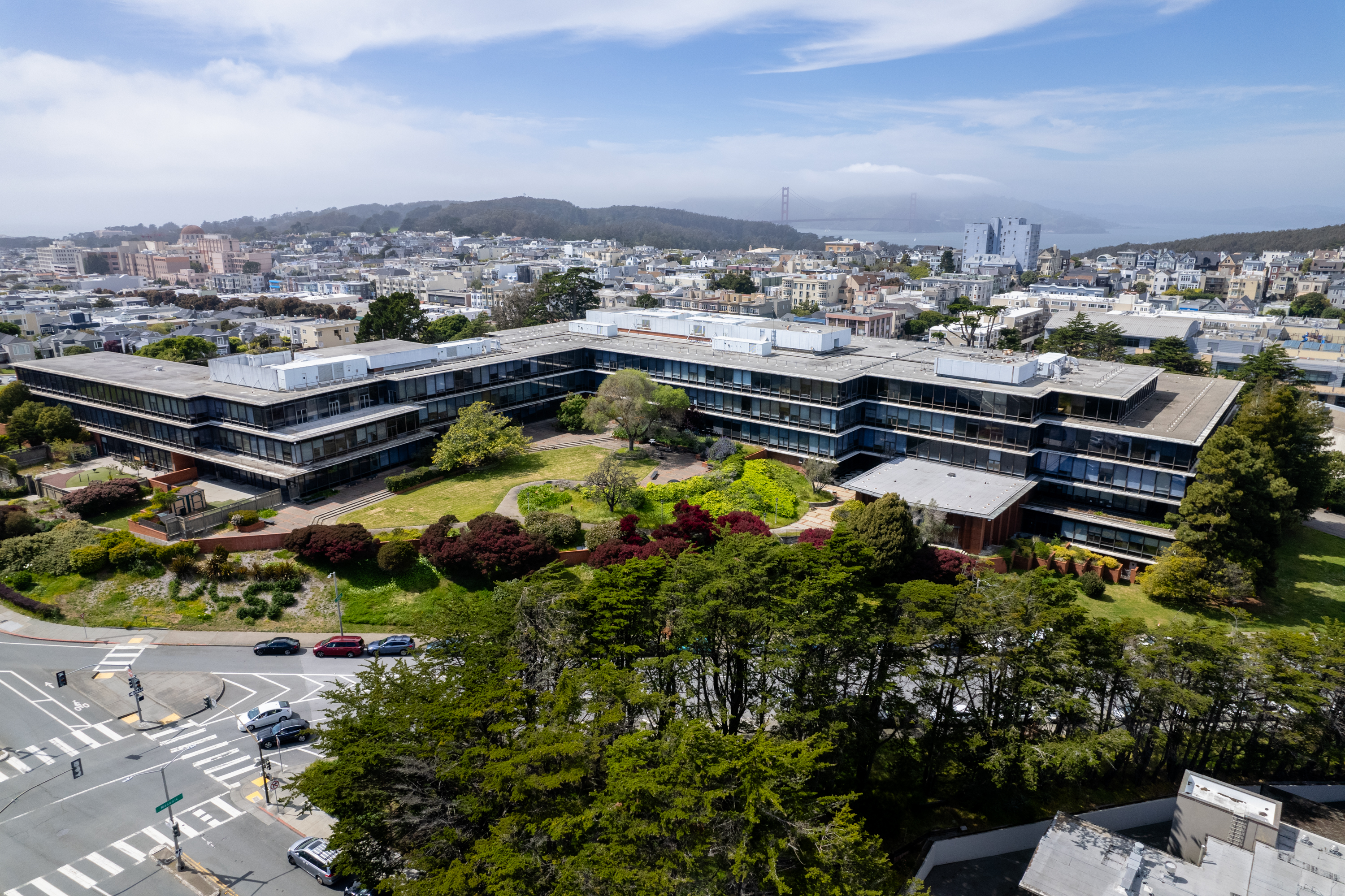San Francisco is full of empty offices that residents and politicians keep saying need to be converted into housing, but most developers are not interested in pursuing such projects because of the high costs.
But in the exclusive Presidio Heights neighborhood, the back-to-back closures of two medical facilities have opened the door for a different type of transformation—one where a local developer plans to turn the campuses into over 1,300 new homes.
Both are located on California Street on either end of thriving Laurel Village—a business strip filled with ground-floor boutiques, small chains, fitness studios and beauty salons, among other small businesses. Historically, this is one of the city’s most built-out and tightly constrained neighborhoods.
One hospital is located at 3700 California St., which is the site of the former California Pacific Medical Center, recently home to Sutter Health before it decamped to Van Ness Avenue.
The San Francisco Planning Department confirmed that it is in the process of reviewing a new plan submitted last week by the Prado Group, which aims to double the size of a previously approved project at the site that never broke ground.
In its latest plan, Prado proposes razing much of the campus to build four new buildings containing up to 567 homes, most of which would be market-rate apartments with a handful of assisted living units and single-family homes mixed in. The new plans also include 488 parking spaces concentrated underground.
“We supported the project previously and are excited to see it being revised to provide additional much-needed housing,” said Planning Department spokesperson Anne Yalon.
Separately, down the street, Prado already earned approvals in 2019 to transform UCSF’s former campus at 3333 California St. into 744 new homes. The facilities were most recently used as a center for Covid vaccinations and testing before it closed last year.
Before then, it was used mostly as an office, primarily by the Fireman's Fund Insurance Company up until the mid 80s.
Taken together, the neighborhood makeover is among the most ambitious housing developments in San Francisco’s dismal housing pipeline. The city is committed to permitting 82,000 new homes by 2031 but is far off the pace needed to achieve that goal.
A commercial real estate source familiar with the two properties said there was ample interest from foreign entities in acquiring the sites before Prado did, but that the firm’s local ties to San Francisco helped it close those deals. Prado CEO Dan Safier, who did not respond to multiple requests for comment, is also a resident of the neighborhood.
In an interview with the San Francisco Business Times in 2021, he said 3333 California St. could have been a “jewel” in the area, but is instead “walled off from the public” and “not something you can experience.” In place of brick walls, Prado envisions 35,000 square feet of new retail and up to five acres of public open space.
But the redevelopment hasn’t always been welcomed with open arms. As in most San Francisco neighborhoods, some residents voiced concerns about the height of buildings and disturbances from ongoing construction.
A group of Laurel Heights residents filed a lawsuit in 2020 arguing that the city failed to comply with certain environmental checks in approving the 3333 California proposal. A person with knowledge of the litigation confirmed that a settlement was subsequently reached with the plaintiffs.
Meanwhile, in February, Safier made a rare public appearance in front of Presidio Heights residents, reportedly reassuring them that the 3700 California project would not exceed the 80-foot limit currently set for the area. This, despite Prado qualifying for state density bonuses that would have circumvented those limits, Safier said.
‘Ready for 1,000 new neighbors’
Raymond C. Fong has owned and operated Wine Impressions squarely in the middle of the Laurel Heights shopping district on California Street since 1990. Hanging on one of his walls is a framed overhead shot of what the neighborhood used to be—the Laurel Hill cemetery—before the graves were moved en masse nearly a century ago to make room for the homes and shops that are currently in its place.
Fong said he keeps it up to serve as a reminder of how things can change.
For decades, the bulk of his clientele came from nearby University of San Francisco students and wealthy residents in and around the neighborhood.
Now, some 30 years later, there’s one change above all that he’s fixated on. “Everyone got older,” Fong said. “It’s just not a neighborhood where a lot of people leave and new people come in.”
Fong, who lives two blocks away from his store, said he just turned 79 this week. He remembers a time when he regularly made private booze deliveries to Presidio Heights homeowners throwing extravagant soirées. Those days are long gone.
“We’ve been partying for four decades,” he joked. “Now, we can’t keep up anymore. It’s natural, but it’s impacting our entire community.”
In its latest plan documents, Prado said the 3700 California Project would be built in phases, although it was not clear when those phases would commence.
“I’d be so ready for 1,000 new neighbors,” Fong said. “But at the rate things are going, I don’t think we'll be around to see that day.”
